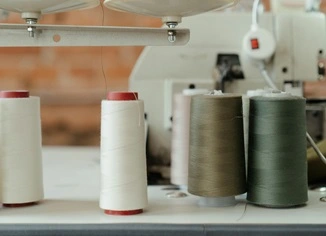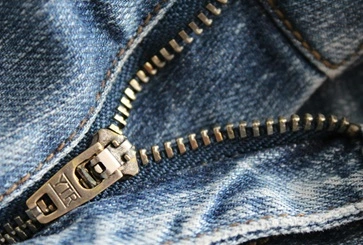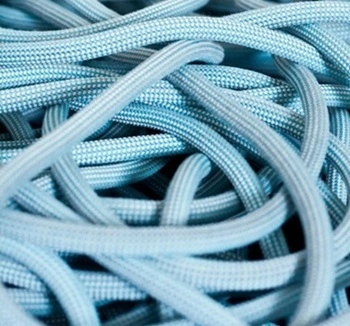Different Types of Trimming Used in Apparel Industries
The primary fabric of the garment is an essential part of the construction of the garment which acts as trimming. Different types of trimming used in garments are most important for making a cloth. The items and processes to be discussed in this article are those components. To make garments and shipping them to the buyer, trimmings, and accessories have great importance in garment manufacturing. The items and processes to be discussed in this article are those components, other than the primary fabric of the garment, that are an essential part of the construction of the garment or that act as trimming. In this article, we discuss on Different Types of Trimming Used in Apparel Industries.
List of Different Types of Trimming Used in Apparel
- Sewing thread
- Button
- interlinings
- Zipper
- Elastic
- lining
- Label
- Motif
- Less
- Pocketing fabric
- Ribbon
- Collar bone
- Rivet
- Hook and loop fastenings
- Wadding
- Braid
Sewing thread:
Sewing thread is the most important trimming used in garments industries. Almost all garments produced have one element in common; the stitching thread. Whilst stitching thread is most notably a small percent of the cost of garments.

Button:
Buttons are hardware gadgets used together with buttonholes for the fastening of garments. They can upload decoration in addition to providing a closure; buttons can be used on my own as decoration. The sort of materials from which buttons can be made is Considerable, including herbal wood, bone, man-made metal, polyester, and casein. In addition, Plastic and metal can be combined which include while a metal ring encircles a button, and plastic may be protected with the fabric of the garment.

Zipper:
These are the principal gadgets used in clothing that are partly textiles in nature and in part non-textile, difficult material. They offer a neat, robust fastening in garments Zipper is used device for binding the rims of an opening of fabric or other flexible material, Zip used in apparel jackets and jeans, bags, and different bags.

Lace:
The term lace correctly refers to the type of open shape originally made with the aid of hand and now available in a variety of machine-made forms. Some are formed from twisted yarns, few are embroideries on the net or more solid fabric.
Motif:
The term motif is frequently used to describe a decorative addition to the garment, but the use of motifs sporting a company’s name, trademark, or brand is now widespread. Consequently, the subject of labels and the subject of motifs can’t be separated easily. Motifs are available in a wide form of types, sizes, and methods of attachment but the range could be limited here to small, decorative objects that are attached flat to the outside of cloth.
Elastic:
Where elasticated effects are required regionally on garments but without added decoration, corded elastic of diverse widths or even flat rubber strips are used. Corded elastics incorporate rubber or elastin threads, which provide excessive stretch and recovery.
Level:
No garment may be sold without some kind of label attached to it. Labeling listing fiber content is mandatory, and size labeling is clearly necessary. Care labeling is usually voluntary in place of a legal requirement, however, its use is on the increase retailers try to make sure that clothes do not fail the consumer as a result of incorrect action.
Lining:
Linings are usually a functional part of the cloth, being used variously to maintain the shape of cloth, to enhance the hang and comfort by allowing it to slide over different cloth, to add insulation, and to cover the inside of a garment of complicated production to make it neat. In many cases linings are decided on to match the garment to be able to be unobtrusive, however, in others they are chosen to add to the design of the garment even perhaps as a subtle, identifying feature of the brand on an otherwise widely to be had style.
Interlinings:
Interlinings are used to support, toughen, and control areas of garments inclusive of collars, cuffs, waistbands, hems, facings, and the fronts of jackets and coats. They can be sewn into the garment or attached by using fusing, The complexity of interlinings used varies greatly between
tailored wear, in particular menswear, and other varieties of garments.
Hook and Loop fastenings:
Hook and loop fastening is utilized in a restricted range of garment applications, however, where it’s far used its particular properties are extraordinarily valuable. The advantage in this context is that it is able to be opened and closed easily, even when wearing gloves or mittens, and it is useful to provide a secondary, moderately water-resistant closure over zips on such garments.
Wadding:
Wadding is the name given to the fiber fillings used in garments where warmth is required without remarkable weight. They aim to simulate the warm temperature and lightness of down but with the advantage of washability and speed of drying as well as decreased cost. The fiber used most typically is polyester.
Braid
Braids were originally braided fabrics, produced by way of interlacing yarns diagonally in the shape of plaiting. They were either slender flat fabrics or the sort of slender tube familiar as shoelaces. Flat braids of this type are still used and in wool and acrylic, they make tender and flexible edgings for binding round medium and heavyweight garments.

These are the Different Types of Trimming Used in Apparel Industries. All are the mandatory elements for a garment.
- You may love to read: What are the Differences Between Trims and Accessories?